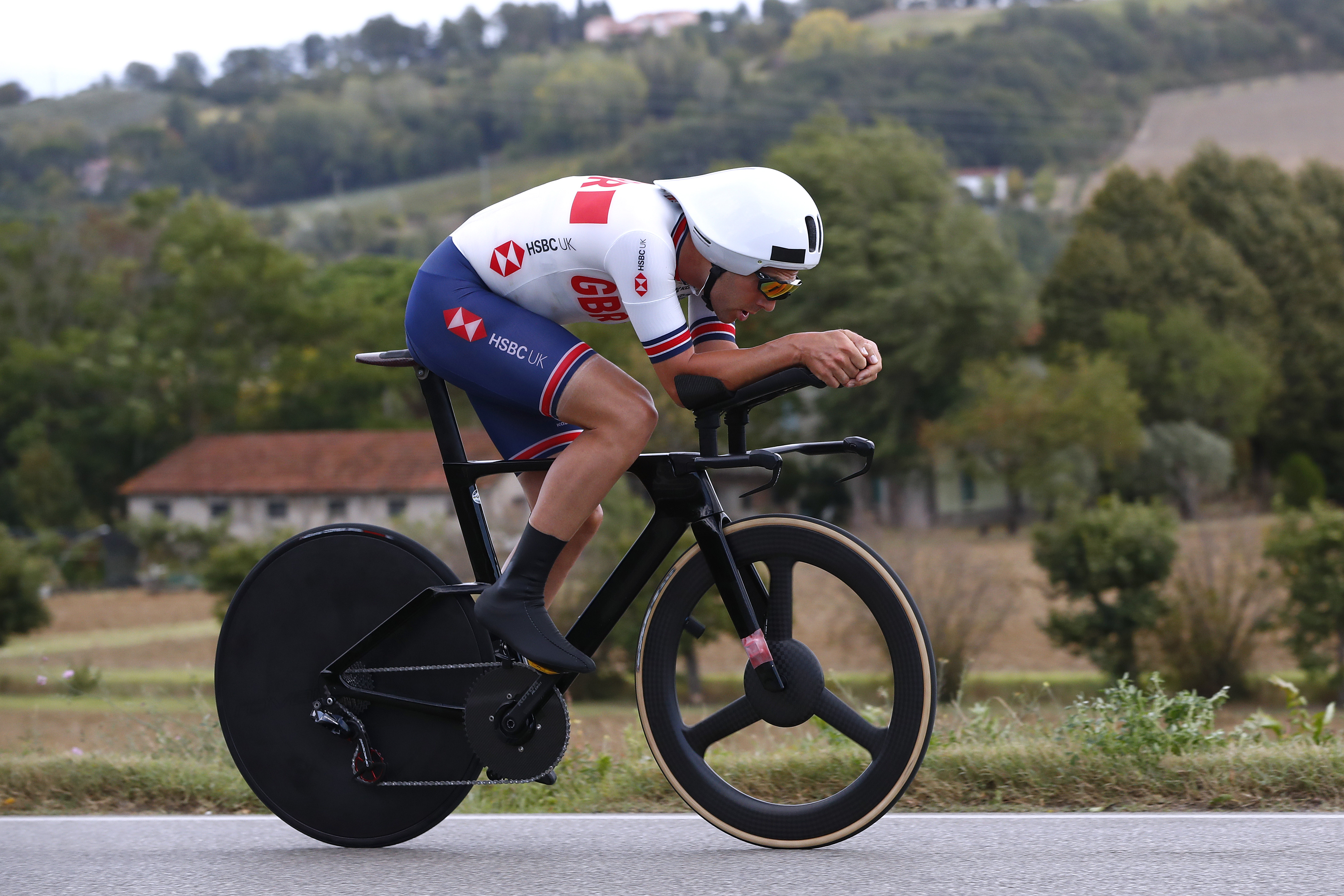
Alex Dowsett has said that he sees no issue with the new 20mph speed limit ruling from the national governing body for time trialling that was announced this week.
In new guidance published on Tuesday by Cycling Time Trials [CTT], it was announced that all riders taking part in time trials on UK roads will now need to slow down when riding through 20mph zones.
CTT stated that the consensus is that 20mph zones and time trialling are “incompatible” and therefore any course with a substantial 20mph section should no longer be used if an alternative route is available.
The new ruling is bound to cause a stir amongst the UK time trialling scene. But former multiple national time trial champion Dowsett told Cycling Weekly that it's a logical step to take in order to safeguard the future of the discipline on British roads.
“I don’t think it changes a great deal to be honest and is the right thing to do and stance to take,” he said.
“We’ll lose a few courses to 20mph speed limits, there’ll be question marks over 30mph speed limits but I think we’ll find most courses are on national speed limit roads.
“I don’t mean dual carriageways necessarily but country lanes where the traffic count is minimal.
“A 20mph speed limit I’d imagine reflects a high traffic count which is a non-starter for a course.”
The CTT explained in its new guidance that most riders competing in time trials in Britain travel between 20 and 30mph and acknowledged that riding at high speeds is capable of “causing public outrage” as well as potential risk to other road users and the riders themselves.
“Such conduct could cause the Government to review the existing permission for time trials to take place on public roads, expose riders and organisers and CTT officials to the possibility of civil and criminal proceedings, and invalidate the insurance CTT holds for participants in time trials,” the guidance reads.
As a result, Dowsett explained that after reading through the new information himself, he feels it is a sensible move from CTT long term.
“Either way, it’s right that a national governing body should be encouraging sticking to speed limits and the law to protect our sport long term,” he added.
In Cycling Time Trials words themselves, time trialling is "an ideal introduction to competitive cycling".
So what is a time trial?
"Time trialling is the simplest of competitive formats: a race against the clock, with riders starting a minute apart. It's known as the 'race of truth' because there's nowhere to hide, no one to draft behind; just you and the bike and the thumping of your heart. Oh, and a clock ticking," says Dan Joyce of CTT.
"Most events are fixed distance, being 10, 25, 50 or 100 miles. There are also fixed time events - 12 and 24 hours - with the objective being to ride the furthest you can.
"Courses are on public roads and are either 'out and back', using a roundabout to turn halfway, or circuits with consecutive left turns. You can take part on any roadworthy bike except a recumbent. Normally you need to be a member of a Cycling Time Trials-affiliated cycling club."
Former racing cyclist, and resident Cycling Weekly expert Michael Hutchinson said that 30mph zones could end up coming into question in relation to the new guidance too.
“My instinct would be that you shouldn't be racing in a 20mph zone at all and then I read that and thought actually, maybe this is more pragmatic,” Hutchinson said on the guidance. “The other question of course is what then happens with 30 mile an hour zones? Because there's no shortage of 30 mile an hour zones that you race through.”
A lengthier guidance note on the new ruling, available on the CTT website, clearly states that if district and club officials are unable to find alternatives to courses featuring 20mph limits, then some exceptions may apply.
This includes taking into account whether a course is a typically used hill climb, or features similar terrain on a circuit.
Hutchinson explained that he was interested to see how the exceptions would be put into practice moving forward.
“Going through the guidance notes they've published along with it, kind of my first thought was let's see how this goes,” he said. “It might work and it might not. Clearly with hill climbs, that seems fair enough. There are a few hill climbs that people might hit 20 miles an hour on but not many at all.
“That’s the same with a climb on a hilly circuit or something, I think the same logic applies there. I think the third and fourth exemptions, I'd be curious to see how it works in practice.”
“I kind of wondered if in some instances, they might end up setting up a couple of timing stations into an over 20mph zone that they could then use to work out if people are exceeding the speed limit,” Hutchinson added. “But a lot of these are going to end up being on sort of small, relatively little used club courses where riders probably will obey a 20mph speed limit.
“I mean it would clearly be a totally different ball game if you tried running a national championship on a course with a mile and a half of 20 mile an hour speed limit on it, that'd be very hard to make work.
"If we're talking about a club course, that's got 300 yards of a 20 mile an hour zone somewhere, in a village or something, then that might well be capable of being made to work perfectly.”







